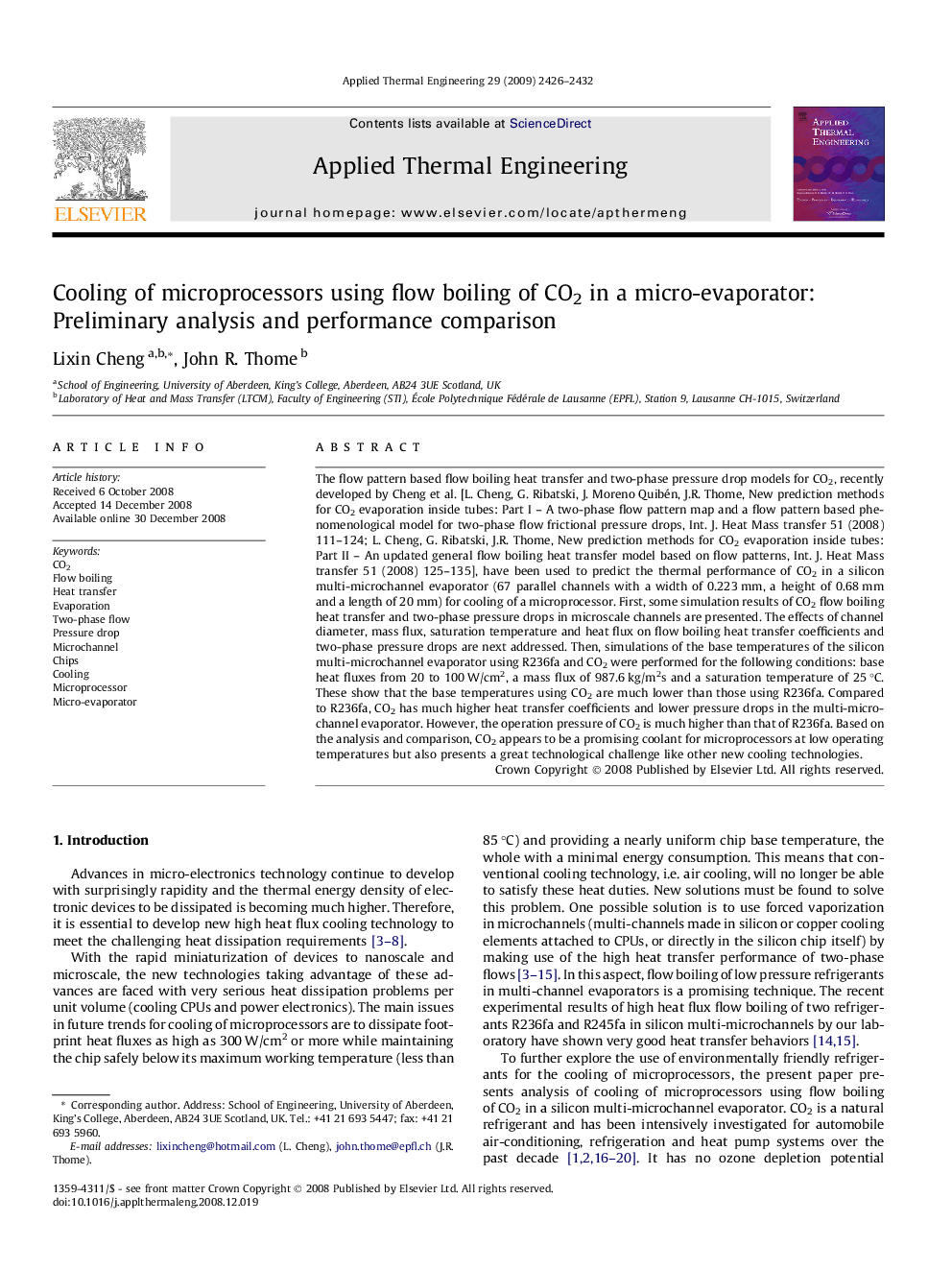| Article ID | Journal | Published Year | Pages | File Type |
|---|---|---|---|---|
| 648563 | Applied Thermal Engineering | 2009 | 7 Pages |
The flow pattern based flow boiling heat transfer and two-phase pressure drop models for CO2, recently developed by Cheng et al. [L. Cheng, G. Ribatski, J. Moreno Quibén, J.R. Thome, New prediction methods for CO2 evaporation inside tubes: Part I – A two-phase flow pattern map and a flow pattern based phenomenological model for two-phase flow frictional pressure drops, Int. J. Heat Mass transfer 51 (2008) 111–124; L. Cheng, G. Ribatski, J.R. Thome, New prediction methods for CO2 evaporation inside tubes: Part II – An updated general flow boiling heat transfer model based on flow patterns, Int. J. Heat Mass transfer 51 (2008) 125–135], have been used to predict the thermal performance of CO2 in a silicon multi-microchannel evaporator (67 parallel channels with a width of 0.223 mm, a height of 0.68 mm and a length of 20 mm) for cooling of a microprocessor. First, some simulation results of CO2 flow boiling heat transfer and two-phase pressure drops in microscale channels are presented. The effects of channel diameter, mass flux, saturation temperature and heat flux on flow boiling heat transfer coefficients and two-phase pressure drops are next addressed. Then, simulations of the base temperatures of the silicon multi-microchannel evaporator using R236fa and CO2 were performed for the following conditions: base heat fluxes from 20 to 100 W/cm2, a mass flux of 987.6 kg/m2s and a saturation temperature of 25 °C. These show that the base temperatures using CO2 are much lower than those using R236fa. Compared to R236fa, CO2 has much higher heat transfer coefficients and lower pressure drops in the multi-microchannel evaporator. However, the operation pressure of CO2 is much higher than that of R236fa. Based on the analysis and comparison, CO2 appears to be a promising coolant for microprocessors at low operating temperatures but also presents a great technological challenge like other new cooling technologies.
